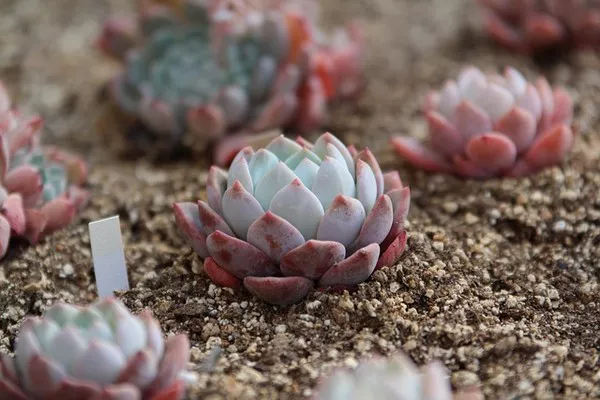Succulents, with their unique and often striking appearances, have become incredibly popular in recent years as indoor and outdoor plants. These resilient plants are known for their ability to thrive in arid conditions and are favored by both novice and experienced gardeners alike. However, for those new to succulent cultivation, understanding where these plants grow best is crucial for their success. In this comprehensive guide, we will delve into the optimal growing conditions for succulents, both indoors and outdoors, to help you cultivate healthy and vibrant specimens.
Understanding Succulents: Characteristics and Adaptations
Before delving into their ideal growing conditions, it’s essential to understand what makes succulents unique. Succulents are a diverse group of plants characterized by their ability to store water in their leaves, stems, or roots, allowing them to thrive in dry, arid environments. This adaptation enables succulents to withstand periods of drought by storing water for later use, making them well-suited to regions with limited rainfall.
Additionally, succulents typically have fleshy leaves or stems, which serve as water reservoirs. These specialized tissues not only store water but also enable efficient water absorption from the soil. Furthermore, many succulents have evolved other adaptations, such as shallow root systems or protective coatings, to minimize water loss through evaporation.
Optimal Growing Conditions for Succulents
While succulents are known for their ability to withstand drought, providing them with the right growing conditions is essential for their health and vitality. Whether grown indoors or outdoors, several key factors contribute to the successful cultivation of succulents:
1. Sunlight: Succulents thrive in bright, indirect light. When grown indoors, place them near south- or west-facing windows where they can receive ample sunlight throughout the day. Outdoors, choose a location with partial to full sunlight, depending on the species. While some succulents can tolerate full sun, others may prefer some protection from intense midday rays, especially in hot climates.
2. Well-Draining Soil: Proper soil drainage is critical for succulents as they are susceptible to root rot if left in waterlogged conditions. Choose a well-draining potting mix specifically formulated for succulents and cacti, or amend regular potting soil with perlite, coarse sand, or pumice to improve drainage. Terra cotta pots are also ideal as they allow excess moisture to evaporate more readily than plastic or glazed containers.
3. Watering: Despite their ability to store water, succulents still require regular watering, albeit less frequently than other plants. Allow the soil to dry out completely between waterings, then water thoroughly until excess moisture drains from the bottom of the pot. In general, it’s better to underwater than overwater succulents, as they are more resilient to drought than waterlogged conditions.
4. Temperature and Humidity: Succulents prefer moderate to warm temperatures and are generally tolerant of fluctuations. However, they may suffer damage if exposed to freezing temperatures for extended periods. Indoor temperatures between 60-80°F (15-27°C) are typically suitable for most succulent species. Additionally, while succulents prefer low humidity, they can adapt to a range of humidity levels, making them well-suited to indoor environments.
5. Air Circulation: Good air circulation is beneficial for preventing fungal diseases and promoting healthy growth. When growing succulents indoors, ensure adequate ventilation by opening windows or using a fan to improve air circulation. Outdoors, choose a location with gentle breezes to promote airflow around the plants.
6. Container Size and Repotting: Succulents prefer snug containers that allow their roots to fill the pot gradually. When repotting, choose a container only slightly larger than the plant’s current root ball to prevent excessive soil moisture and promote root establishment. Repotting is typically necessary every 1-2 years or when the plant outgrows its container.
7. Fertilization: While succulents are not heavy feeders, occasional fertilization can promote healthy growth and flowering. Use a balanced, water-soluble fertilizer diluted to half-strength during the growing season (spring and summer) and withhold fertilizer during the dormant winter months.
Indoor vs. Outdoor Cultivation: Considerations and Tips
Whether you choose to grow succulents indoors or outdoors depends on various factors, including your climate, available space, and personal preferences. Here are some considerations and tips for both indoor and outdoor cultivation:
Indoor Cultivation
Choose a sunny windowsill or location with adequate natural light for your indoor succulents.
Rotate potted succulents regularly to ensure even growth and prevent stretching towards the light source.
Monitor humidity levels, especially during winter when indoor heating can dry out the air. Consider using a humidifier or placing a shallow tray filled with pebbles and water beneath the pots to increase humidity.
Keep an eye out for pests such as mealybugs, aphids, and spider mites, which can infest indoor succulents. Treat infestations promptly with insecticidal soap or neem oil.
Outdoor Cultivation
Select suitable outdoor containers or plant directly in well-draining soil beds or rock gardens.
Consider the climate and microclimates of your outdoor space when choosing succulent species. Some succulents are more cold-hardy than others and can withstand frost or snow.
Provide protection from extreme weather conditions, such as heavy rain or hail, by moving potted succulents to sheltered areas or covering them with a temporary canopy or awning.
Monitor water requirements closely, especially during hot, dry weather. While succulents are drought-tolerant, they may need supplemental watering during prolonged periods of heat or drought.
Conclusion
Succulents are versatile and resilient plants that can thrive in a variety of environments, provided they receive the proper care and growing conditions. Whether grown indoors as houseplants or outdoors in gardens or containers, understanding where succulents grow best is essential for their long-term health and success. By providing adequate sunlight, well-draining soil, appropriate watering, and proper air circulation, you can enjoy a vibrant and thriving collection of succulents in your home or garden. Experiment with different species and growing methods to discover which ones suit your preferences and environment best. With patience and attention to detail, you can create a beautiful and sustainable succulent garden that brings joy and beauty year-round.


